covid-19 didn’t mobilise but climate must
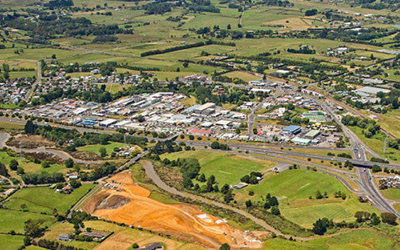

Mad Mill Road Motorway: That the Labour Party has green-lighted the New Zealand Transport Agency’s 21.5-kilometre, $1.345 billion pet project demonstrates the gaping abyss between climate talk and climate action. Real climate action would see existing roads rapidly reprioritised, for essential services including public transport. In desperation, Generation Zero is suing the Labour-led government. image New Zealand Transport Agency

Mad Mill Road Motorway: That the Labour Party has green-lighted the New Zealand Transport Agency’s 21.5-kilometre, $1.345 billion pet project demonstrates the gaping abyss between climate talk and climate action. Real climate action would see existing roads rapidly reprioritised, for essential services including public transport. In desperation, Generation Zero is suing the Labour-led government. image New Zealand Transport Agency
The eventual toll of this pandemic could be in the order of 3 million deaths.
At the time, the reported global toll had only just exceeded 100 thousand107,000, but the calculation wasn’t complex. Subtract the population of China—the government of which was clearly determined to eliminate covid-19—from the global population, multiply by the published estimates of likely infection rate, divide by the known mortality rate.
Incredibly, a year on, totalas published 6.04.2021: the likely global excess mortality has not been estimated, or if it has, not widely published—the reported death toll of 2.85 million is known to be substantially lower than the actual mortality. Aside from the hideous fact that a significant percentage of the survivors of covid-19 are being left seriously debilitated, long term, there is still no fit-for-purpose successor to the World Health Organisation, or comprehensive reform and funding of it. This should have the United Nations and every world leader under continuous siege. As with climate, the absolute least the world’s leaders, media, and populace deserve is a definitive, real-time dashboard that displays total fatalities, and the level of confidence in the component figures.
Few students of World War II history would be willing to proffer that without Franklin D Roosevelt’s mobilisation of American industrial might, the Third Reich would have failed in its bid for world domination. Few students of global warming history, likewise, have confidence that threeas published 6.04.2021: two centuries of fossil-fuel-underpinned industry and infrastructure can now be replaced in time to avert runaway climate change, and brutal consequences for billions. Had humanity put it skates on when first consistently warned three decades ago, maybe, and only, maybe, the market might have led 11 billionas published 6.04.2021: 10. Population is currently projected to plateau at 10.9 billion, 2100 back from the abyss. Dr James Hansen, in the latest draft-chapter-for-fact-checking released of his Sophie’s Planet, warns:
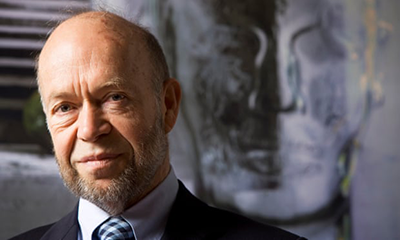
Storming James Hansen: One nonfiction work for a general audience by the world’s best-known climate scientist, Storms of My Grandchildren, should have provided sufficient steel for politicians’ backbones to have spurred the climate action called for. In his just-released draft chapter for fact-checking, Dr Hansen reiterates that nuclear power, much-less pumped hydro storage, is an utter global prerequisite for averting runaway climate change. This was also Hansen’s message in 2011 when hosted in Aotearoa by the Green Party, but as happy as that party is to quote the authority, it is never on the subject of nuclear. image Murdo Macleod | The Guardian
The world is in a race between irreversible runaway climate change and the political changes required to achieve phaseout of fossil fuel emissions. We can still win that race. The next decade likely will determine the outcome.
The existential threat of runaway climate change has come into focus. The critical physical process is the disintegration of ice sheets that could raise sea level several meters, creating havoc for more than half of the world’s largest cities. Together with deteriorating habitability of low latitudes, the massive emigration pressures could make the planet ungovernable.
Only the most determinedly optimistic student of climate action could harbour a high degree of confidence that the race can be won. Because while examples abound of technologies touted as gamechangers, the impact on emissions is negligible. There is not one country claiming to lead the way that has done more than export its emissions, and the toxic consequences of its unbridled appetite for batteries.
When making its three-million-deaths projection in April 2020, in Yes Aotearoa Can Mobilise by Example, the Mahurangi Magazine, not for the first time, expounded the strategy of a small, nimble democratic-climate-action-mobilisation exemplar, convincingly demonstrating scalable global solutions. Since then, Prime Minister Jacinda Ardern has voiced support for exploring the building of the world’s largest pumped hydro storage facility. Situated in the Onslow–Manorburn depression, nominally 668 metres above the nearly adjacent Roxburgh Dam, this would be the 10 200-gigawatt-hour “battery” that would underpin the grid-electrification-of-everything in the motu. Or, pay Tesla more than nz$2 trillion for the same capacity. Globally, grid-electrification-of-everything is the only way greenhouse-gas emissions can be slashed anything like fast enough, and sufficiently comprehensively, to have a fighting chance of salvaging a survivable climate.
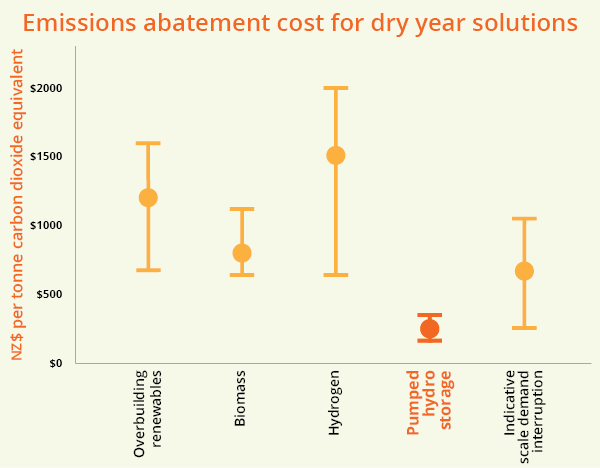
Gracious Acceptance of Natural Gift: When topography, geology, and geographic align as sublimely as they do adjacent the Clutha River to provide the site for the world’s biggest pumped hydro energy storage system, at a fraction of the costs of the alternatives, New Zealanders, and their children’s children, deserve to be treated with respect by otherwise terminally tribally warring self-concerned political parties. Comparative marginal emissions abatement costs of dry-year—and, presumably, base-supply—solutions, above the cost of natural gas. chart Interim Climate Change Committee | labels Mahurangi Magazine
It speaks volumes about the self-interest of the privatised New Zealand power industry that none of the players has a good word to say—but plenty that is blatantly disingenuous—about Waikato University associate professor Earl Bardsley’s heroic concept, which would be a supreme implementation of the gold-standard of energy storage: pumped hydro storage. Setting aside who within or without the Ministry of Business, Innovation and Employment determined that the scheme should be bear the dumbed-down, banal name NZ Battery Project, if the Labour-led government has the courage to deliver the Lake Onslow option, the world will beat a virtual path to its door. In the era of the New Zealand National Film Unit—yet another victim of Lange-government-unleashed privatisation—audiences would be being collectively uplifted and transported by other than avarice and the cult of personality.
Named for the contemporaneous, stubbornly conservative 4th Earl of Onslow, Governor of New Zealand, 1889–1892, there was presumably little objection to the lake formed by the construction then known as the Dismal Swamp Dam submerging the Dismal name, along with the wetland. The new, vastly larger lake deserves a succinct indigenous name, and needs to be on the lips of every New Zealander, if the project is not to be sacrificed at the altar of tribal politics.
The heroic response of the world’s vaccinologists, had the world’s leaders been equally up to the task, could have ensured that far fewer than three million perished in this pandemic. But as viral diseases go, covid-19 was not the big one. Measles is 5 to 6 times more transmissible, and Ebola 15 to 26 times more deadly. Now is the time that every part of epidemic/pandemic preparedness requires resourcing, from social and environmental reform to novel virus detection, to tracking and tracing, to isolation—Aotearoa is still without fit-for-purpose, scalable, isolation facilities—through to squeezing vaccine development timelines.
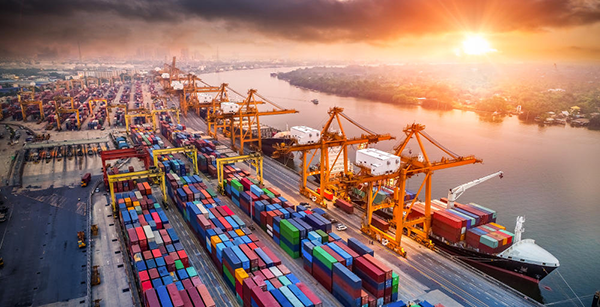
Grid-Electrification of Everything: The fiscal and environmental cost of batteries being heinous, everything that can be directly-grid-electric-powered, must be. Ports can, readily. Ships, can’t, and should be nuclear-powered—other than those of quite small tonnage. Here, at Puerto de Veracruz, México, containers ashore are moved by grid-electric-powered gantry, rather that fossil-fuelled, rubber-tyred straddle. image Det Norske Veritas group
An increasingly unsurvivable climate is developing alarmingly rapidly enough, but over a much longer timeframe than covid-19. The rate, nevertheless, is many times fastersee two paragraphs below: In the last 30 years, 20 times faster than the 5°-in-5000 years rate evident in the last 2 million than Homo sapiens sapiensas opposed to Homo sapiens, to acknowledge Homo sapiens idaltu, and to avoid the more cumbersome alternative of ‘anatomically modern human being’, and for sheer cussedness have needed to adapt to, to date:
When global warming has happened at various times in the past two million years, it has taken the planet about 5000 years to warm 5 degreesCelsius.
In the last 30, do-nothing years, global temperature has risen 20 times faster than that 5°-in-5000-years rate. Aside from boiled-frog syndrome, the costs of mitigating temperature-rise will likely come at an increasingly cruel cost to the poorest, most vulnerable billions. Currently, conflict, climate change, and covid-19 has more than 108 000 people in East Africa under added catastrophic famine-conditions:
Additionally, almost 7 million people are one step away from famine, and as many as 26 million require urgent action to prevent them sliding into the same acute situation.
Success of the team-of-five-million approach surprised and delighted most New Zealanders—Labour and Green parties combined are still polling nearly twice the percentage points of National and act—and was much noted internationally. This suggests that the Yes Aotearoa Can Mobilise by Example would indeed work in the context of meaningful climate action. Labour, however, needs to urgently transcend its specious, self-imposed role as enforcer of the government-as-a-household monetary myth. [New Zealand] government finances:
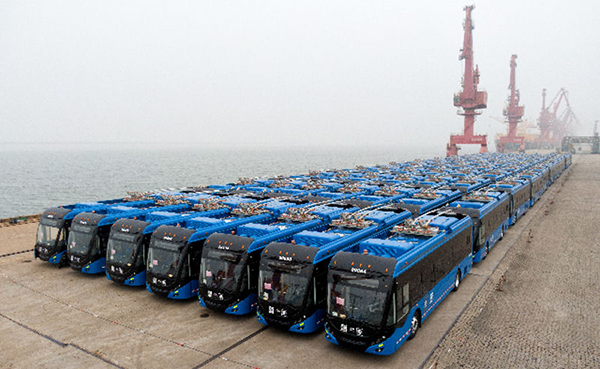
Bound México Way: One thousandth, give or take, of the 131 000 new-energy buses built by Yutong, the world’s largest bus manufacturer. These 130 double-source trolleybuses—both grid-powered and battery-powered—were, August 2020, bound for Mexico City. By what stages they were taken from sea level to a 2240-metre elevation is not readily apparent—just one of the details that underlines the challenge of replacing three centuries of fossil-fuel based infrastructure, overnight. Cities, and Auckland seems determined to be one, that settle for single-source electric buses are guilty exporting their zero-carbon responsibilities. image Yutong
…have nothing in common with those of a household, however wealthy that household might be, and nothing in common with any business, big or small, or [in the Australian example] even state and territory governments.
None of these are currency issuers. They have to generate income or borrow before they can spend, and their borrowing puts them at risk of insolvency.
Our [government] is different, like the national governments of Japan and the United States. It is the monopoly issuer of the Australian-dollar-denominated currency.
The government does not need to increase taxes in order to increase spending, and it doesn’t even need to borrow. Its Reserve Bank issues currency for it all of the time, every day.
This means that building the world’s biggest pumped hydro storage scheme, and grid-electrifying everything, would be the New Zealand economy, and it would have every New Zealander mentally and physically willing and able, working. Entirely objectively, it is a scenario that is possibly humanity’s best shot at salvaging a collectively survivable climate.
It has become cliché to ask an audience if it feels lucky. Team-of-five-million, however, worked because the messaging was perfect. In the context of climate, individuals might feel lucky about their own chances of not being savagely impacted, but the same individuals would probably also be happier knowing that their support for the grid-electrification-of-everything was going to help billions of elderly, vulnerable, and young, to live and die other-than horribly. Also, just as lockdown was greatly preferable to the alternative, many found it more stimulating than same-old-same-old business-as-usual.
Government-as-a-household monetary myth The exception to this distinction is the European Union, where the individual countries are not currency issuers; the European Union is, on behalf of its union states. Proficiently implemented, this federalisation of economies could work wonderfully, but in practice, and famously during the Great Recession, it hamstrung countries targeted, from above, with ruinous austerity measures—the classic case of a lack of adults in the room.
Click to register for 30 May Te Muri Crossing High Tea tickets
